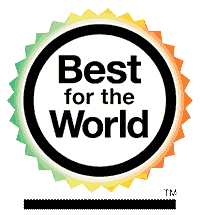Web Hosting: Renewable Energy & RECs

What’s the difference between a web hosting provider that uses renewable energy credits (RECs) and one powered directly by renewable energy? And where do emissions offsets fit into this picture? We explore several answers in this post.
Web hosting using renewable energy can help you reduce greenhouse gas emissions from digital products and services. Green web hosting is a core component of any sustainable web design strategy.
However, not all renewable energy is created equal. Some hosting providers build wind farms or solar arrays adjacent to their data centers. Others bring renewable energy to their customers by purchasing RECs.
To better understand how this applies to green web hosting, let’s look at the ever-changing renewable energy landscape.
An Aging Energy Grid
First, existing electrical grids pose significant challenges to the energy transition we need:
- Many electrical grids are over 100 years old, created at a time when electricity needs were simple.
- They don’t differentiate between power generated by a wind farm, a hydroelectric dam, a solar array, a nuclear plant, oil, or a coal-powered electrical plant.
- Electricity from all sources goes into the grid and mixes together. This makes it challenging to know whether the energy that ends up at your home or business comes from clean, renewable sources or fossil fuels.
Organizations committed to using renewable energy face a confusing landscape. Your primary choices are:
- Invest in renewable energy hardware, such as a wind farm or solar array
- Purchase Renewable Energy Certificates (RECs)
- Invest in a Power Purchase Agreement (PPA) or similar bulk-purchase scheme
Let’s explore the difference in more detail.
Renewable Energy-Powered Data Centers
Even for most data centers with on-site or off-site renewable energy, the center maintains a tie to the local electricity grid and the power its equipment uses is from these grid-fueled power plants. This local electricity mix can rely heavily on fossil fuels that produce greenhouse gasses (GHGs).
— Green Hosting Report, Manoverboard
A solar array on your rooftop or a windmill in the parking lot guarantees that your energy comes from a renewable resource. Since your power source is nearby, this approach also mitigates transmission loss from grid use.
Renewable energy can be installed with or without access to the larger electrical grid:
- A microgrid does not rely on grid power. This small-scale power grid operates independently or in conjunction with the area’s main electrical grid. Any small-scale, localized station with its own power resources, generation, and definable boundaries qualifies as a microgrid.
- Data center wind farms or solar arrays also contribute power back to the primary electrical grid which can then be used by customers via Renewable Energy Certificates (RECs).
However, not all RECs are the same.
Renewable Energy Certificates (RECs)
Simply providing unbundled RECs or facilitating their purchase is not an impactful option or enticement for those companies who want to legitimately power their operations with renewable electricity in a way that meaningfully improves their electricity supply…RECs don’t make your corner of the internet greener, and aren’t a good primary strategy. Identify options for a better strategy.
— Greenpeace, Clicking Clean
To circumvent our power grid’s shortcomings, energy companies created RECs. Unfortunately, the grid can’t differentiate between electricity sources. RECs act as a tracking system for renewable energy.
Every time a clean energy power company produces a unit of energy it also produces a renewable energy certificate. RECs are sold bundled with electricity and separately (unbundled). The latter often means a raise in cost to the end customer. Plus, because they are often sold through resellers, RECs don’t contribute to the proliferation of new clean energy production.
Purchasing RECs guarantees that the amount of power you purchased is produced from a clean source. However, unbundled RECs are not a good primary strategy.
To clarify, here’s a video that sums up how RECs work.
Where do Carbon Offsets Fit In?
Also, RECs are not the same as carbon credits or carbon offsets. Carbon offsets or carbon credits mitigate emissions. They are not used to purchase electricity.
More importantly, we always recommend that any organization first devise an emissions reduction strategy before relying on credits or offsets. Emissions sources lurk in every corner of our organizations. It is important to identify and reduce them first. This is an important part of an effective Net Zero strategy.
Only then should you rely on carbon offsets, which are viewed by many in the environmental movement as a lazy “permission to pollute” solution. In fact, a recent investigation by The Guardian revealed that more than 90% of rainforest carbon offsets from one of the world’s largest providers are worthless. Be careful and do your research before purchasing carbon offsets.
Also, this video from John Oliver outlines some of the significant challenges with carbon offset solutions.
Green Hosting for Your Own Website
Finally, when choosing your own hosting provider, please consider a company that powers their servers with 100% renewable energy. As data center use makes up about 15% of the internet’s overall emissions, You could measurably reduce your organization’s digital emissions by making this transition.
For an extensive list of green hosting providers, review the Green Web Foundation’s Green Hosting Database. Are you a green host that’s not listed? Add your company.
To learn more about digital sustainability concepts, read Digital Sustainability: How to Get Started Today.
Digital Carbon Ratings, now in Ecograder.
Understand how your website stacks up against industry carbon averages with this new feature.
Try Ecograder


